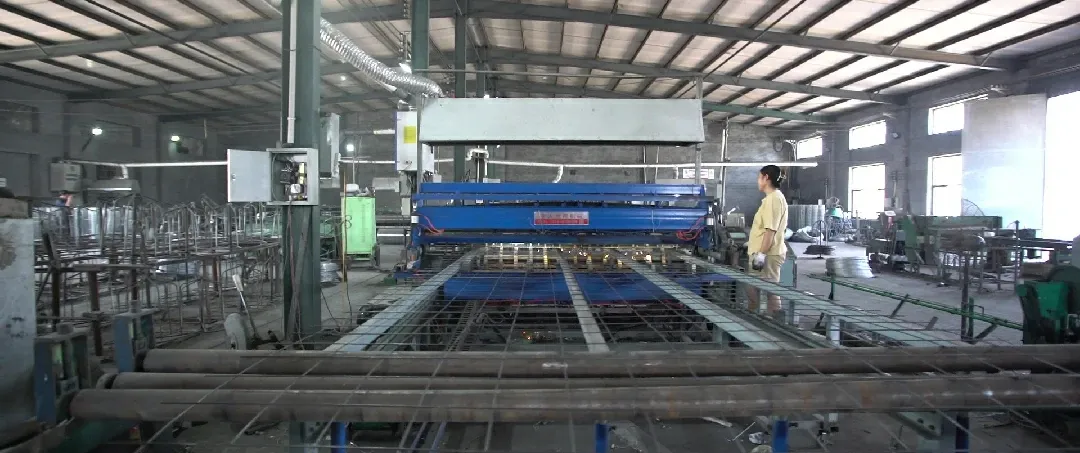modern barbed wire
Modern Barbed Wire A Symbol of Security and Division
Barbed wire, an invention that has left an indelible mark on the landscape of human civilization, is often associated with both the protection of property and the imposition of boundaries. Modern barbed wire, while grounded in a rich history, has evolved significantly since its inception, reflecting societal changes, technological advancements, and the complex dynamics of security and division.
The story of barbed wire begins in the late 19th century, with the necessity for efficient fencing to manage lands efficiently and to keep livestock contained. The first patent for barbed wire was granted to Joseph Glidden in 1874. His design, which consisted of sharp barbs affixed to a wire strand, quickly gained popularity among farmers and ranchers in the United States. It provided an inexpensive and effective solution for enclosures, which previously relied on wooden or stone fences that were costly and labor-intensive to maintain.
As society transformed, so too did the uses and perceptions of barbed wire. By the early 20th century, it began to symbolize not only agricultural utility but also control and restriction. The wire was deployed in military contexts and political prisons, marking boundaries and demarcating areas of confinement. Iconic images from both World Wars illustrate how barbed wire became a barrier between combatants and non-combatants, peace and violence, freedom and captivity.
modern barbed wire

In contemporary society, the applications of modern barbed wire have broadened further. In addition to its traditional agricultural uses, barbed wire serves as a critical element of security in urban environments, commercial spaces, and high-security areas such as prisons and military installations. Its presence can convey a sense of safety and deterrence, discouraging potential intruders or undesired elements. However, the use of barbed wire also raises important ethical questions. Its appearance can evoke feelings of fear and oppression, often reminding observers of its association with human rights abuses and the harsh realities of confinement.
Technological advancements have contributed to the evolution of barbed wire. Today, it is often made from galvanized steel to enhance durability and resistance to the elements. Additionally, variants of barbed wire, such as razor wire, have emerged. Razor wire, with its more formidable and menacing appearance, is increasingly used in secure facilities around the world. This evolution reflects a growing emphasis on heightened security measures in a world that feels increasingly fraught with risks.
Moreover, the sociopolitical landscape has also reshaped the conversations surrounding barbed wire. In regions experiencing conflict or political strife, barbed wire can serve as a physical manifestation of division, often used to mark borders between nations or to segregate communities. The Berlin Wall, adorned with barbed wire, stands as a potent symbol of separation, representing both a physical and ideological divide. In recent times, debates around immigration have intensified, with barbed wire being employed in border security measures, raising questions about ethics, human rights, and the nature of national sovereignty.
In conclusion, modern barbed wire exemplifies a complex duality. While it serves crucial functions in security and agriculture, its implications extend far beyond practicality, delving into realms of morality, freedom, and community. As society continues to navigate issues of safety, identity, and division, the legacy and impact of barbed wire persist, underscoring its significance as both a protective barrier and a symbol of human separation. The story of modern barbed wire is, ultimately, a reflection of humanity's ongoing struggle between security and liberty, control and compassion.
-
Weather Resistance of Woven Wire and Chicken Wire Fencing MaterialsNewsJun.05,2025
-
Umbrella Nails Innovations in Roofing Fasteners for Wind ResistanceNewsJun.05,2025
-
Modern Barbed Wire Fence Designs for Perimeter ProtectionNewsJun.05,2025
-
How Iron Nail Wire Enhances Nail Strength and Installation EfficiencyNewsJun.05,2025
-
High-Security Razor Fence Solutions for Perimeter ProtectionNewsJun.05,2025
-
Durable Wire Netting Fence Solutions for Animal EnclosuresNewsJun.05,2025




